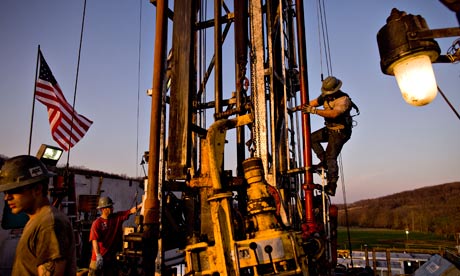It’s green growth or nothing
We have no choice. High energy prices are here to stay and resource-frugality is our only hope for a sustainable future

-
- guardian.co.uk, Thursday 3 May 2012 20.00 BST
- Article history

Much of our economic debate implies we must choose between going green or going for growth. That view may be the opposite of the truth. There is now hard evidence that the real choice is between green growth or no growth at all.
For the first time in the postwar period, energy and other commodity prices are unusually high for this point of the global recovery. Normally the cost of basic materials falls in real terms for at least two years after a recovery begins. In the past, this boosted real incomes, supported spending and fuelled recovery.
No more. Today there is a different phenomenon in the developed world: the “squeezed middle”. Far from boosting incomes and spending, high energy and material prices have undermined an already fragile recovery buffeted by financial crisis and the legacy of debt. The new pattern of high prices and squeezed incomes has enormous consequences for our future.
Since 1970, there have been four big global recessions. If we take the first three, energy prices in the two years after recovery began in the US were flat (on average, just 1%). In real terms, energy prices fell. By contrast, the rise since the global trough in 2008-9 has been a painful 63%. Nor is this just about energy. For commodities like food and minerals, price rises after those earlier recessions averaged 11%. This time it has been five times as big.
The phenomenon has lasted too long and has been on too big a scale to blame the hedge funds. The century-long decline in commodity prices seems to have come to an end. The cause is Asia. China is growing at five times the rate of Britain during our industrialisation, and the numbers of people involved are unprecedented. Asia’s catch-up is on a scale never experienced in economic history.
We can hope, of course, that new resources will gradually substitute for old as prices rise. The most promising candidate is shale gas, which has expanded dramatically in the US, leaving the gas price there at half the European level. Shale gas can be used responsibly to generate low-carbon electricity as long as the carbon is captured and stored, so this is a real option consistent with tackling climate change.
We will need shale gas to compensate for the costly production of declining oil. However, not a single roast dinner has yet been cooked with shale gas outside the US.
The speed of the US exploitation of shale gas is unlikely to be repeated in more densely populated regions like Europe. The footprint of shale wells is large, and environmental concerns about water pollution have already led to bans not just in France but also in US states like New Jersey and New York. Outside the US, mineral rights are usually owned by governments rather than landowners, which means there is less incentive to drill and more incentive to argue “not in my back yard”. Many shale-rich areas (China, for example) are short of the water that is essential to the fracking process.
So far, shale gas has not stopped the rise in global gas prices even though cargoes of conventional gas have been diverted from the US. This partly reflects increased demand from the newly industrialising countries, but it also reflects a switch from nuclear in the wake of the Fukushima disaster. We will need a lot of shale gas to compensate for three of the biggest industrial economies – Germany, Italy and Japan – going non-nuclear.
Given these trends, we can hope for cheaper energy in the long run, but it would be rash to bank on it. We should encourage resource-frugal growth wherever possible, an objective that tallies perfectly with Europe’s commitment to reducing carbon emissions. Tougher EU carbon limits, and consequently a higher carbon price, would send consistent signals to investors in the energy-saving, renewables, nuclear and carbon-storage sectors.
Energy saving is the win-win: it has the potential for job creation (for example, in household improvements) and it supports growth by cutting bills and boosting spendable income. But there must be a wider agenda for resource efficiency too – recycling metals, repairing and reusing – as the Rio+20 summit in June will spell out.
There is a facile view that our green commitments – to tackling climate change, avoiding air and water pollution, protecting natural habitats – are an obstacle to growth. The message of the commodity markets is surely different. Resource-hungry growth could rapidly stall due to commodity price rises, simply because so many of us want it. If we want sustainable growth, we do not have a choice. We must go green.
• Follow Comment is free on Twitter @commentisfree
